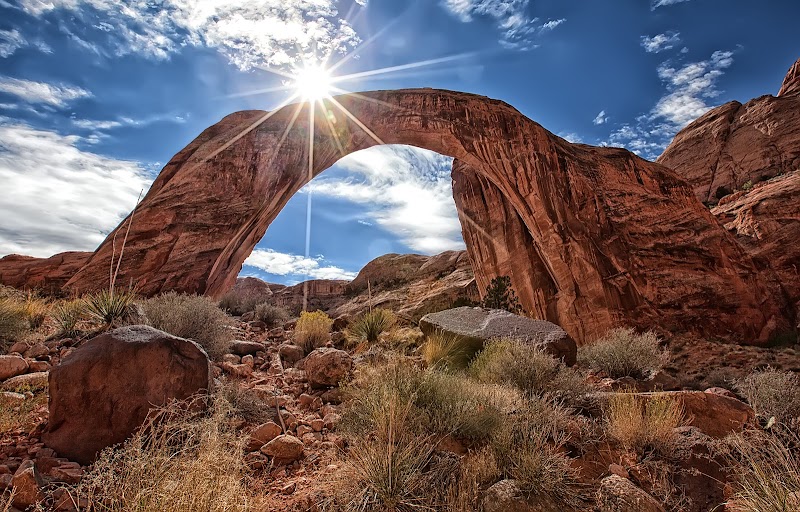
Rainbow Bridge National Monument Adventures
Rainbow Bridge National Monument is home to one of the world's largest natural bridges, offering a wonder of outdoor geology and cultural history.
About Rainbow Bridge National Monument

Rainbow Bridge National Monument in Utah is renowned for its striking natural feature, the Rainbow Bridge, one of the world's largest natural bridges standing at about 290 feet tall and spanning 275 feet. Located in remote desert canyons, the monument embodies a significant cultural landmark for Native American tribes and retains its spiritual and historical importance. The area is framed by deep sandstone canyons and arid, rugged terrain typical of the Colorado Plateau. Accessible mostly by boat along Lake Powell or via strenuous hiking routes, the monument attracts outdoor enthusiasts looking to explore its austere beauty and serene environment. Despite its limited accessibility, Rainbow Bridge is a testament to natural geological processes over millions of years, making it an appealing destination for geologists and photographers. While concentrated tourism ensures the preservation of its natural and cultural resources, its status as a sacred site for several Native Indian tribes adds to the monument's respected global standing.
Highlights
The striking Rainbow Bridge itself, standing as an awe-inspiring natural arch.
Cultural importance as a sacred site for local Native American tribes.
Journey via Lake Powell, with options for scenic boating to access the monument.
Remote hiking routes offering serene and rugged desert canyon landscapes.
Notable Natural Features
Rainbow Bridge
An impressive natural bridge formed over millions of years, towering majestically within the monument.
Lake Powell Access
Essential waterway to the monument, offering scenic boat rides and access points.
Ancient Petroglyphs
Historic rock engravings giving a glimpse of the area's past indigenous inhabitants.